Introduction:
Analog TDS Conductivity sensor is used for measuring the TDS value of the water, this TDS values define the cleanliness of the water. It can be used to check the quality of domestic water, hydroponic liquids, and in other fields of water quality testing
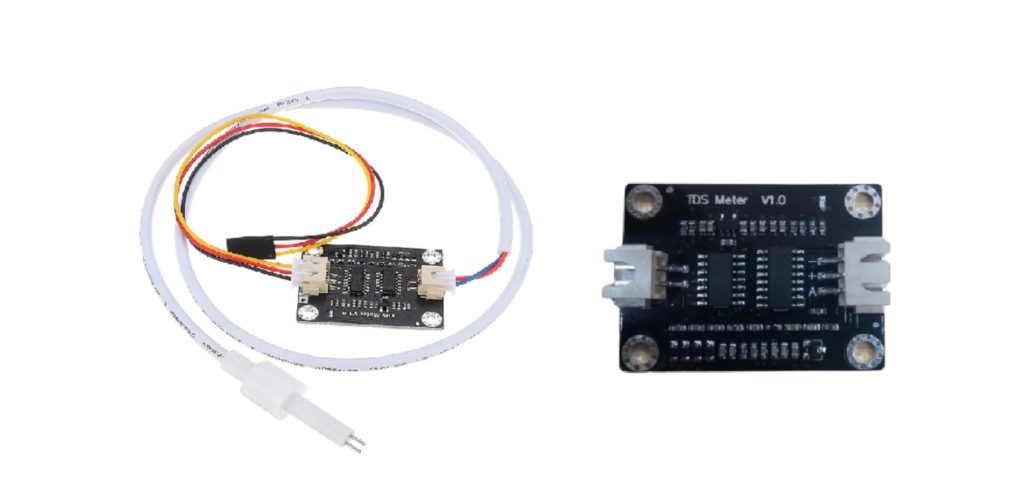
TDS Pen is widely available to measure TDS value, but it is not able to communicate the data to a control system like microcontroller, computer, PLC, Arduino, etc. You can use our TDS sensor which can communicate and transmit data to an Arduino or any microcontroller with an analog interface.
Check out our website www.probots.co.in to find all the parts for your projects! We have 2000+ Electronic Modules, Sensors, and Components for all your electronics projects.

You can purchase this signal generator here – Buy Now
What is TDS? Why is it useful to measure it?
TDS stands for Total Dissolved Solids(TDS). It indicates the water quality. In general high TDS, the value indicates high dissolved solids in water and low quality. So TDS values define the cleanliness of the water. The below Image shows the acceptable TDS values for different water sources.
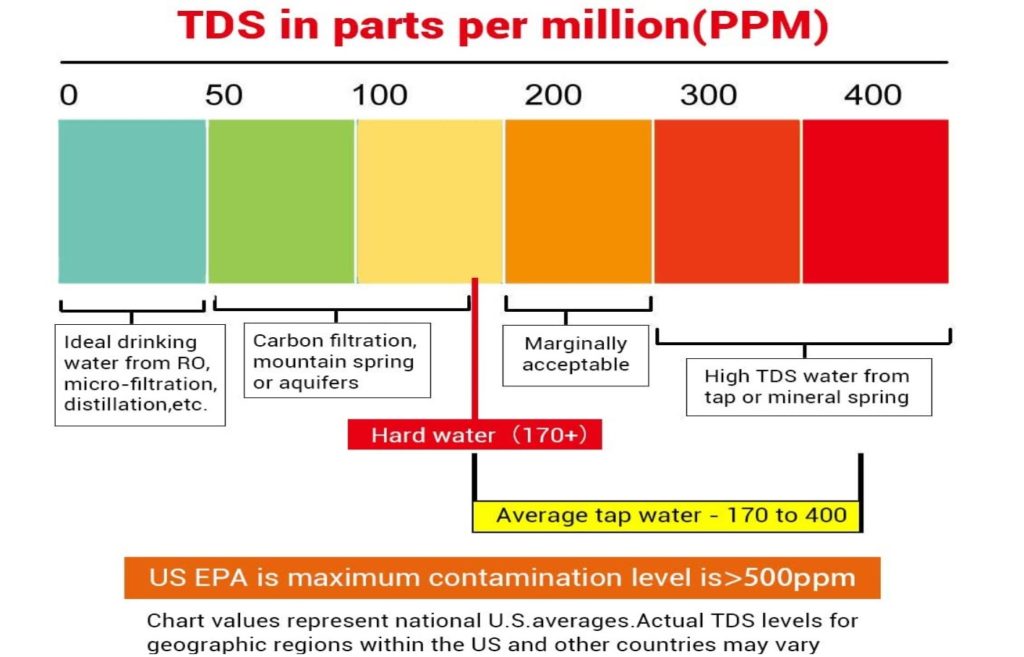
Low TDS values of 0-50 are ideal for drinking. High TDS values are not recommended for consumption.
Specification
- Input Voltage: 3.3~5.5V
- Output Voltage: 0~2.3V
- Working Current:3~6mA
- TDS Measurement Range: 0~1000ppm
- TDS Measurement Accuracy: ±10% FS(25°C)
- Number of Needle in TDS Probe: 2
- Overall length:(approx): 60cm
- Color of TDS Probe: White and WaterProof Probe
- Interface Analog output
Note:
- The probe can not be used in water above 55 degrees centigrade.
- The probe can not be left too close to the edge of the container, otherwise, it affects the reading.
- The Head and the cable of the probe are waterproof, but the connector and signal transmitter board are not waterproof.
Board Overview
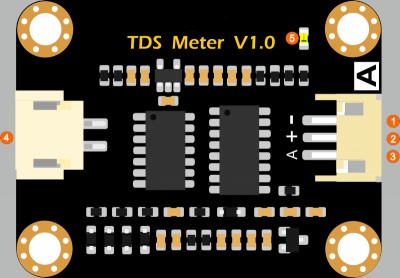
| Num | Label | Description |
|---|---|---|
| 1 | - | Power GND(0V) |
| 2 | + | Power VCC(3.3V~5.5V) |
| 3 | A | Analog signal output(0~2.3V) |
| 4 | TDS Probe | TDS Probe Connector |
| 5 | Led | Power Indicator |
- Hardware
- Arduino Uno
- Analog TDS Water Conductivity Sensor Waterproof Module
- Jumper wires for connection
- Liquid for testing
- Arduino IDE
Connection Diagram
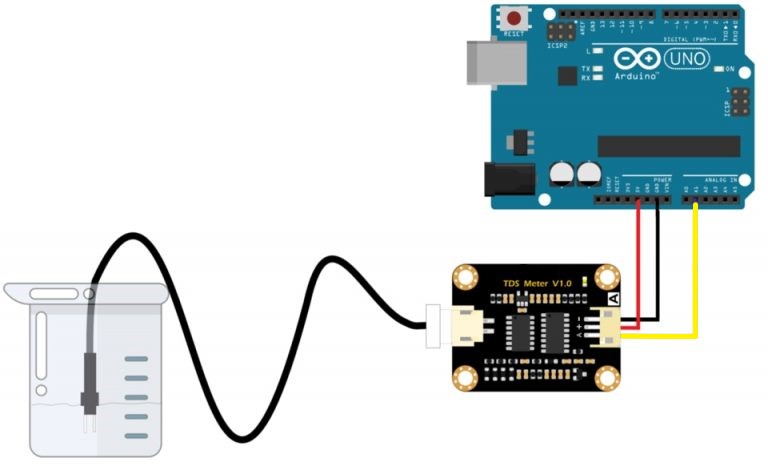
Connection Explanation
As you can see this signal Transmitter Board has two connectors. The left one is the TDS probe connector, the right side connector is used to interface this module with the Arduino or any other compatible controller board. The connector pins are labeled with A which is analog output and connected to which analog pin of Arduino,+ which can be connected to 3.3v or 5v,- which is connected to ground pin.
- Red Wire: connected 5V
- Block Wire: Connected to gnd
- Yellow Wire: connected to Analog pin A1(TDS output is Analog output)
Sample Code
#include <EEPROM.h>
#include "GravityTDS.h" // garvityTDS.h is library used by the dfrobot and is available in
github
#define TdsSensorPin A1 // define the TDS sensor pin connected to which analog pin of
GravityTDS gravityTds; arduino
float temperature = 25,tdsValue = 0;
void setup()
{
Serial.begin(115200);
gravityTds.setPin(TdsSensorPin);
gravityTds.setAref(5.0); //reference voltage on ADC, default 5.0V on Arduino UNO
gravityTds.setAdcRange(1024); //1024 for 10bit ADC;4096 for 12bit ADC
gravityTds.begin(); //initialization
}
void loop()
{
//temperature = readTemperature(); //add your temperature sensor and read it
gravityTds.setTemperature(temperature); // set the temperature and execute temperature compensation
gravityTds.update(); //sample and calculate
tdsValue = gravityTds.getTdsValue(); // then get the value
Serial.print(tdsValue,0);
Serial.println("ppm");
delay(1000);
}
Install library of GravityTds.h library and run the example program.
Output:
- Upload the code to the controller board, and open the Serial Monitor.
- Insert the TDS probe into the water and check the Serial Monitor.
- Test with different types of water because a different type of water has different ppm values.
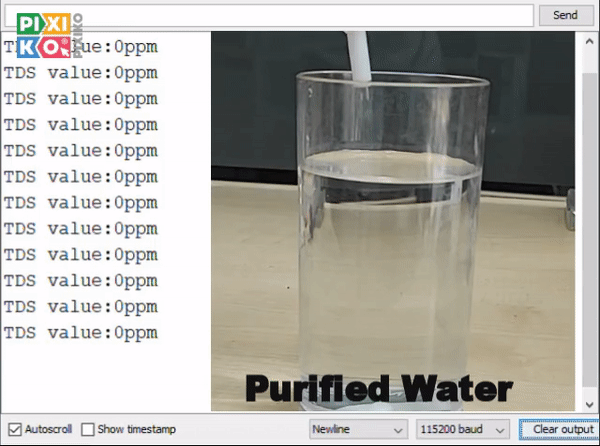
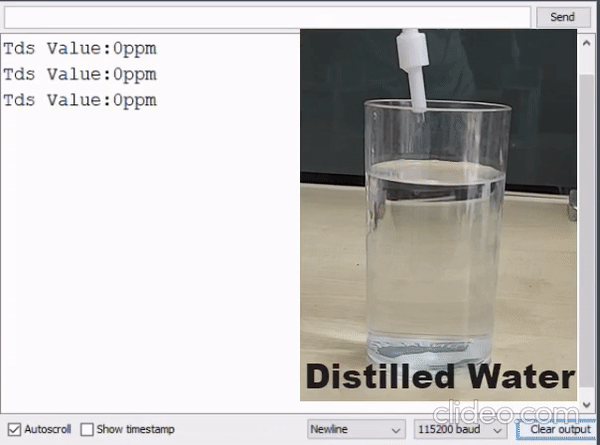
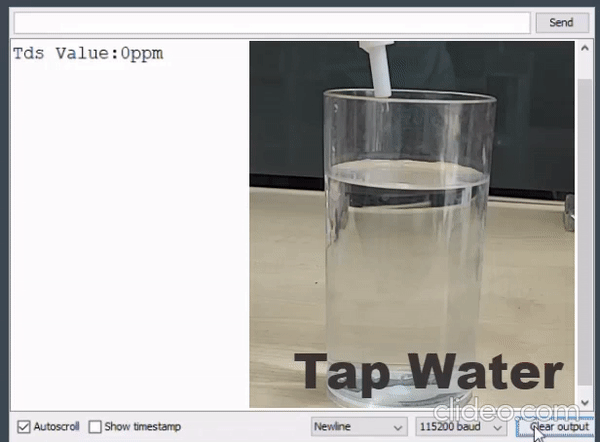
Application
- Fish tank and aquariums: Fish requires a specific TDS and ph similar to the natural environment in which they live. Freshwater fish require less than 400ppm, with some other freshwater fish requiring less. Saltfish requires TDS readings of between 5000and 500000ppm. Using our Analog TDS module maintain the TDS levels of the Fishtank and aquarium.
- Hydroponic: A TDS meter is useful for quickly measuring the nutrient concentration of the hydroponic solution. This TDS Probe is Waterproof, so it can be fit in the pipes and measure the organic compounds dissolved in water.
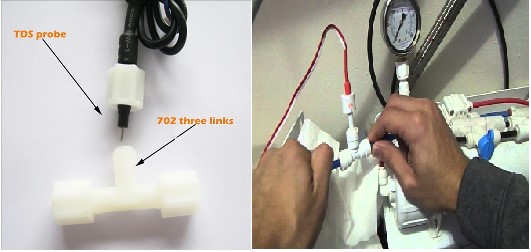
- Pool and spas: A low TDS reading of water can help prevent maintenance issues, skin irritation, and algal blooms.
- Colloidal Silver: There are many consumers of colloidal silver today using a TDS meter to measure their colloidal silver concentration in parts per million(ppm). The TDS meter gives a relatively accurate measurement. “Colloidal Silver means, tiny silver particles suspended in a liquid”.
How does this sensor work?
A TDS meter is basically an electrical charge(EC) meter, it has two electrodes equally spacing apart, are inserted in water, and provides an ac signal to it. The resistance of the probe changes with conductivity and measures the voltage across the probe, converting it into dc and amplifying it.
The amplified output voltage depends on the conductivity of the liquid. So measuring this voltage we can calculate the TDS.
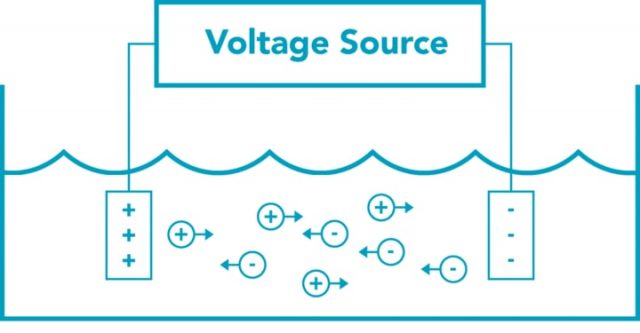
- We have two electrodes of known dimension at a known spacing
- We dip this in liquid and provide an AC signal to it
- The resistance of the probe changes with conductivity
- We measure the voltage across the probe, convert it to dc and amplify it.
- The amplified output voltage depends on the conductivity of the liquid.
- By Measuring this voltage we can calculate the TDS.